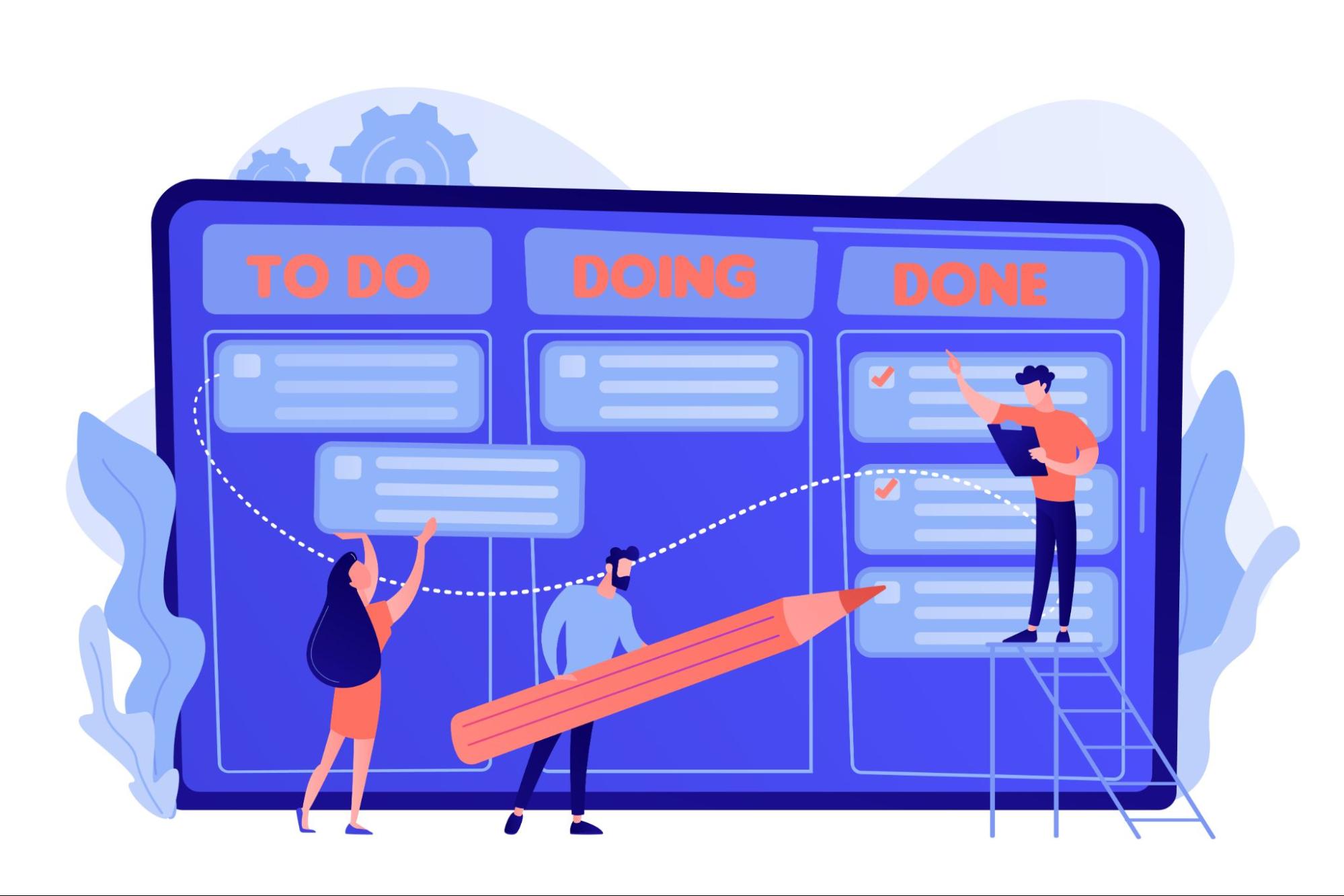What is an Agile Project? A Comprehensive Guide
Explore the fundamentals of Agile project management, its methodologies, and how Agile projects foster flexibility and efficiency.
Start Free Trial
Explore the fundamentals of Agile project management, its methodologies, and how Agile projects foster flexibility and efficiency.
Start Free Trial
Agile project management is a dynamic, iterative approach to software development that emphasizes continuous releases and integrates customer feedback throughout the process. This methodology enables software teams to enhance their development speed, improve collaboration, and more effectively respond to market changes.
By adopting agile and project management, teams can manage projects more flexibly and efficiently, ensuring that customer needs are met promptly and effectively.
After answering what is an agile project, let’s learn about its history. Agile project management has its roots in Toyota's lean manufacturing principles from the 1940s. These principles focused on reducing waste and increasing transparency, paving the way for agile methodologies in software development. Unlike the traditional waterfall project management approach, which relies on extensive upfront planning and "big bang" launches, agile encourages ongoing collaboration and swift innovation.

Agile and project management are commonly implemented through two primary frameworks: scrum and kanban.
This framework is based on fixed-length iterations called sprints. Each sprint typically lasts between one and four weeks and involves completing a set of tasks. At the end of each sprint, the team reviews its work and plans the next sprint, allowing for regular reassessment and adaptation.
In contrast to Scrum, Kanban focuses on continuous releases. Work items move through a visual workflow, such as a Kanban board, from start to finish. This approach allows teams to maintain a constant flow of work and make improvements continuously rather than at set intervals.
Scrum is a widely used framework within agile and project management. It is characterized by fixed-length work iterations known as sprints, which are structured through four key ceremonies that guide the process.
The work begins with the backlog, which encompasses all tasks that need to be completed. Scrum operates with two distinct backlogs: the product backlog and the sprint backlog. The product backlog, managed by the product owner, is a prioritized list of features and tasks. The sprint backlog, on the other hand, is populated by selecting items from the top of the product backlog until the team's capacity for the upcoming sprint is full.
In Scrum, team roles are clearly defined to support the process. The scrum master acts as the facilitator and champion of the scrum methodology. The product owner serves as the voice of the customer, ensuring that the product backlog aligns with user needs and priorities. The scrum team, typically composed of cross-functional members, is responsible for completing the tasks during each sprint. This structured approach allows scrum teams to maintain focus, improve collaboration, and consistently deliver high-quality outcomes.
A scrum board is an essential tool for visualizing all the tasks in a given sprint. During the sprint planning meeting, the team transfers items from the product backlog to the sprint backlog. The scrum board typically features multiple columns representing stages of the workflow, such as To Do, In Progress, and Done. This visualization is crucial for enhancing transparency and tracking progress in agile project management.
Kanban is another agile project management framework that aligns work with the team’s capacity. It emphasizes swift task completion and rapid adaptability to change, even more so than scrum.
Unlike Scrum, kanban usually does not utilize backlogs. Instead, tasks are placed directly into the To Do column. This setup allows Kanban teams to focus on continuous releases, which can occur at any time. All tasks are visible, well-defined, and ready for execution, so once one task is completed, the team immediately proceeds to the next.
To manage workflow efficiently, kanban employs Work In Progress (WIP) limits, which define the maximum number of tasks allowed in any single column (except the To Do column) at one time. This ensures that the workload matches the team’s capacity. The kanban framework includes the following four key components:
A kanban board is an essential tool for visualizing the work being done and planning resources. It helps project managers see the entire workflow, develop timelines, and allocate resources effectively. The board is structured into columns and lanes that represent the different stages of work. Tasks, or stories, move through these columns as they progress toward completion.
In Kanban, tasks start in the To-Do column and move forward when the Work in Progress (WIP) limits allow for the next task to be addressed. It's important to break down the list of work into small, manageable tasks and prioritize them accordingly. High-priority items can be separated from less urgent tasks using lanes, making it easier to focus on what matters most.

Regardless of the project management and agile methodology—whether it’s scrum or kanban—agile project managers need effective tools to track progress and plan future work. Key responsibilities include:
Estimating is a crucial component of both Kanban and Scrum project management. For Kanban teams, WIP limits for each workflow state are often determined based on previous experiences and the team's size. Scrum teams, on the other hand, use project estimating to gauge how much work can be accomplished in a sprint. Agile teams frequently employ various estimating techniques, such as planning poker, ideal hours, or story points. These methods assign a numeric value to tasks, providing a reference point for evaluating team performance during sprint retrospectives. Tools like Jira can be customized to capture these unique estimations, enhancing accuracy and efficiency.
Agile reporting plays a vital role at both the start and end of each sprint. Initial estimates guide the team's workload, while end-of-sprint reports evaluate the accuracy of those estimates. Jira offers numerous out-of-the-box reports that provide real-time, actionable insights into team performance. Utilizing these data-driven reports during retrospectives helps agile teams continuously improve their processes and outcomes.
The product backlog is a prioritized list of work derived from the product roadmap and its requirements. Development teams draw tasks from this backlog for each sprint. Regular grooming and maintenance of the backlog are essential for aligning the team with long-term goals and adapting to changing business objectives. Jira facilitates backlog grooming with features like multi-select ranking, drag-and-drop ordering of user stories and bugs, and flexible search filters. These tools help teams manage extensive backlogs efficiently, ensuring that the most important tasks are prioritized and addressed promptly.
Agile project managers must effectively communicate the status of projects to various stakeholders, including senior leadership. It’s crucial to provide the right level of context and detail to keep everyone informed and engaged. The updates given by the project management tools include a clear overview of project progress, key milestones, current challenges, and any changes or critical issues. By using it, project managers can ensure that stakeholders are consistently informed and aligned with the project's direction and status.
By implementing project management and agile methodology and leveraging these tools, your team can enhance productivity, adapt quickly to market demands, and achieve successful outcomes that align with your strategic goals. Whether you’re just starting with agile or looking to refine your existing practices, these insights and practices will help you navigate the journey toward more efficient and responsive project management.

A learning experience platform designed for modern teams.